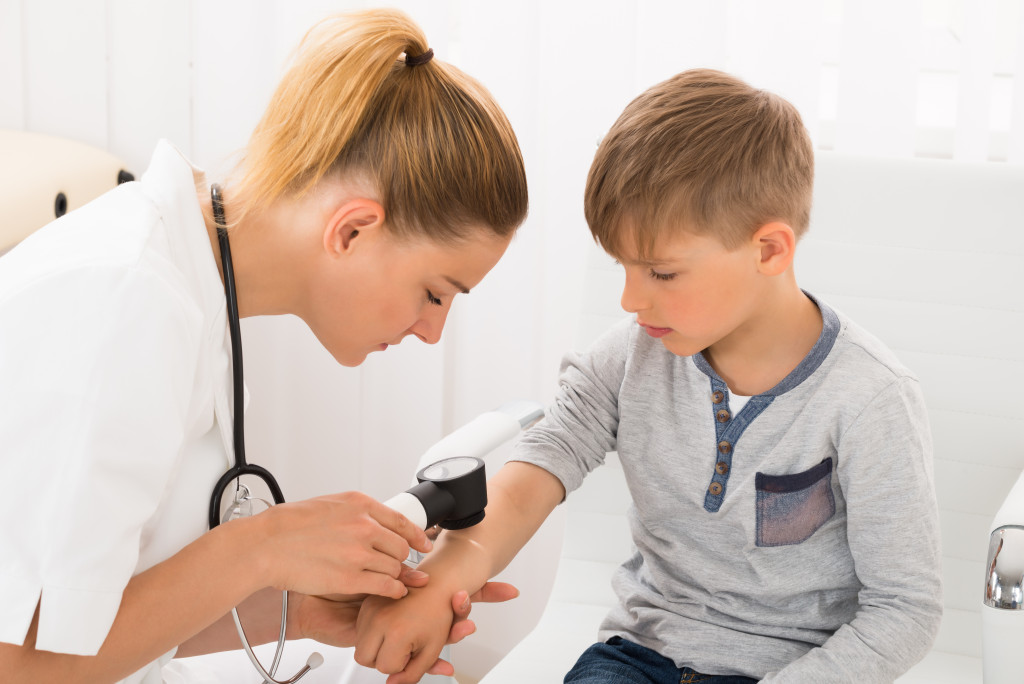Disclaimer: This website provides health information for educational purposes only and is not a substitute for professional medical advice, diagnosis, or treatment. Always seek the guidance of a qualified healthcare provider with any questions you may have.
As parents, we want to protect our children from all the bad things in the world. But sometimes, despite our best efforts, they can still fall victim to accidents or become sick. That’s because children are more vulnerable than adults. They have weaker immune systems and are more likely to put things in their mouths, leading to them ingesting harmful bacteria.
Injuries are also a big concern for parents of young children. According to the Centers for Disease Control and Prevention (CDC), around 9,000 kids under the age of 14 die from injuries each year in the United States. This is a high number for a first-class country like the United States. However, it isn’t only injuries that parents should be worried about. There are also common diseases that may affect their child. These can be more costly than an injury, and they can even be more fatal in some cases.
Here are some common diseases affecting children that you should look out for.
Croup
This is a common respiratory illness that affects kids under five. It’s characterized by a harsh, barking cough and can be accompanied by a fever, runny nose, and difficulty breathing. A virus usually causes croup, but bacteria can also cause it.
Croup can be rarely fatal, but if not treated properly, children that have it can end up with pneumonia.
Pneumonia
Pneumonia is a severe lung infection that can be deadly for young children. Bacteria or viruses often cause it, and symptoms include coughing, chest pain, shortness of breath, and fever. Pneumonia is more common in kids with underlying medical conditions like asthma or sickle cell disease.
Children with pneumonia also experience excruciating pain in their chest and difficulty breathing, and if not treated early, pneumonia can lead to death. In addition, comorbidity with other respiratory diseases like those we have mentioned earlier can also increase the chances of fatality.
Meningitis
Meningitis is an inflammation of the membranes surrounding the brain and spinal cord. A virus or bacteria usually causes it, and symptoms include fever, headache, stiff neck, and vomiting. Meningitis can be deadly, especially for young children.
Early diagnosis and treatment of meningitis are crucial because the disease can progress quickly and lead to death within 24 hours. Additionally, meningitis is a highly infectious disease. This means that it can be rapidly passed from one person to another, making it a big concern for parents of young children. If there is a viral breakout within your area, you must give your children their routine vaccinations.
Ear Infections
Ear infections are a common childhood illness, particularly in kids under two. Bacteria or viruses usually cause them, and symptoms include pain, fever, and difficulty hearing. Ear infections often go away on their own, but in some cases, they can lead to severe complications like hearing loss or meningitis.
Treatment for ear infections usually involves antibiotics, but sometimes surgery is required to remove the infected tissue.
While ear infections are not fatal, they can be very painful for young children. Additionally, ear infections can lead to serious complications if not treated properly.
Bronchiolitis
This is another respiratory illness that affects young children, specifically those under two. It’s caused by an infection of the bronchioles, the small airways in the lungs. Symptoms include coughing, wheezing, and difficulty breathing.
Viruses usually cause bronchiolitis, but bacteria can cause them in some cases. Treatment usually involves supportive care like giving your child fluids and rest. However, in some cases, hospitalization may be necessary.
While bronchiolitis is not fatal, it can be very serious, particularly for young babies. Additionally, bronchiolitis can lead to other complications like pneumonia.
Asthma and Allergies

Asthma is a chronic lung condition that causes wheezing, coughing, and difficulty breathing. It’s one of the most common chronic conditions in children, and it can be triggered by allergies, cold air, exercise, or viral infections.
On the other hand, allergies are a reaction of the immune system to a foreign substance, such as pollen, pet dander, or dust mites. Allergies can cause various symptoms like sneezing, itching, and difficulty breathing.
While asthma and allergies are not fatal, they can be very serious and lead to life-threatening complications if not treated properly. Treating asthma is all about taking preventive measures to avoid triggers and keeping the airways open. Allergies, on the other hand, can be treated with medication or by getting a good allergy treatment for children. These treatments aren’t invasive in any way, so they’re safe and comfortable for children.
Flu
The flu is a highly contagious respiratory illness that can cause severe symptoms in children. Symptoms include fever, chills, muscle aches, fatigue, nausea, and vomiting. The flu can lead to serious complications like pneumonia, so it’s important to get your child vaccinated every year.
As a parent, it’s important to be aware of the dangers that your child may face. Accidents and injuries can happen at any time, so it’s important to be prepared. And, if your child does become sick, it’s important to seek medical attention right away. Early diagnosis and treatment are often key to a quick and full recovery.

